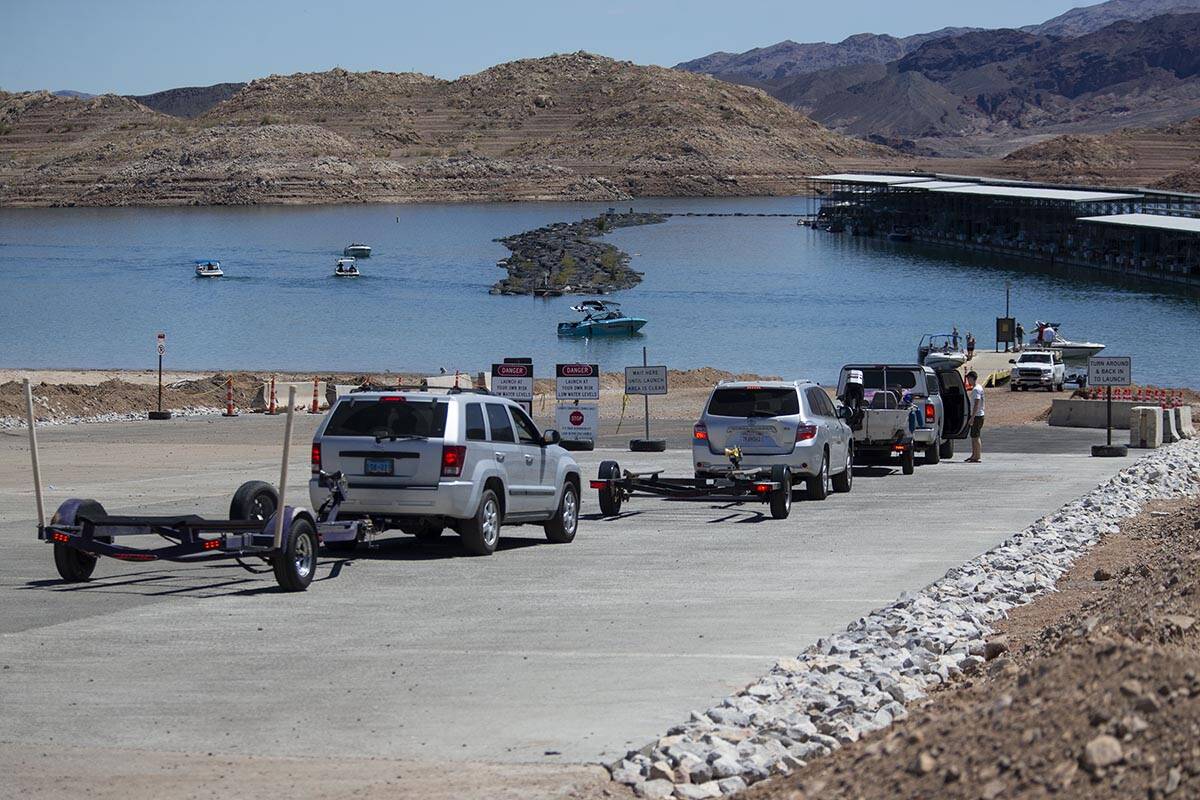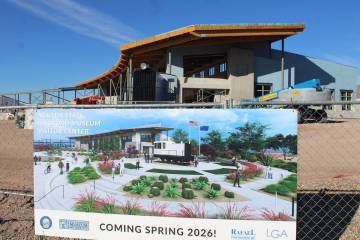As Lake Mead declines, so do its visitation numbers
The water level isn’t the only thing that’s down at Lake Mead National Recreation Area.
After being number five on the list of top 10 most visited national parks and recreation areas in 2021, the lake dropped to the ninth spot for 2022.
After seeing about 7.6 million visitors in 2021, just 5.6 million people were reported to have come last year, a drop of nearly 25 percent.
National Park Service spokesperson Mike Theune pointed out that, even after the drop, Lake Mead is still in the top 10.
“Out of 424 units, Lake Mead is currently number nine and accounts for about 2 percent of visitors to the entire system,” he said.
The units he referred to include parks, memorials, monuments, recreation areas and battlefields, in addition to more than a dozen other designations that together make up the entire U.S. National Park System.
Slicing the data more finely, one finds that the top eight parks account for more than 26 percent of visitors and the 331 least visited parks account for another 25 percent. So one way of looking at the numbers would make Lake Mead the most popular site of the middle 50 percent.
Theune said that without more research and polling it is not possible to say why visitors to Lake Mead dropped off while the total number of visitors to all parks increased by about 5 percent — 297 million visitors in 2021 versus 312 million in 2022.
However, the drop coincides with the lake reaching its lowest levels since it was initially filled to 1,220 feet in 1941. It reached its greatest depth of 1,225 feet in 1983. Since then, years of drought and increasing pressure on the lake due to development and agricultural use have brought the level down to 1,044 feet in August 2022. The level is projected to reach 1,013 feet in July 2024.
The states that depend on Colorado River water are currently at an impasse over how to allocate future water supplies. If the level drops below 950 feet, water could be released from Hoover Dam, but it would not be able to generate electricity. At 895 feet, the lake would be considered a “dead pool,” and no water could be released.
By way of comparison in terms of number of visitors, Lake Mead still saw more visitors in 2022 than some of its more famous cousins in the National Park System. This includes the Grand Canyon (4.73 million visitors), Zion (4.69 million), Yosemite (3.67 million) and Yellowstone (3.22 million).
Contact reporter Bill Evans at wevans@bouldercityreview.com or at 702-586-9401.
10 Most Visited Parks
1 (1) Blue Ridge Parkway, 15,711,004
2 (3) Golden Gate National Recreation Area, 15,638,911
3 (2) Great Smoky Mountains National Park, 12,937,633
4 (4) Gateway National Recreation Area, 8,728,291
5 (8) Lincoln Memorial, 7,825,397
6 (6) George Washington Memorial Parkway, 6, 7,397,120
7 (7) Natchez Trace Parkway, 6,543,533
8 (9) Gulf Islands National Seashore, 8, 5,685,155
9 (5) Lake Mead National Recreation Area, 5,578,226
10 (20) Vietnam Veterans Memorial, 4,886,254
* The 2021 ranking is in parentheses
















